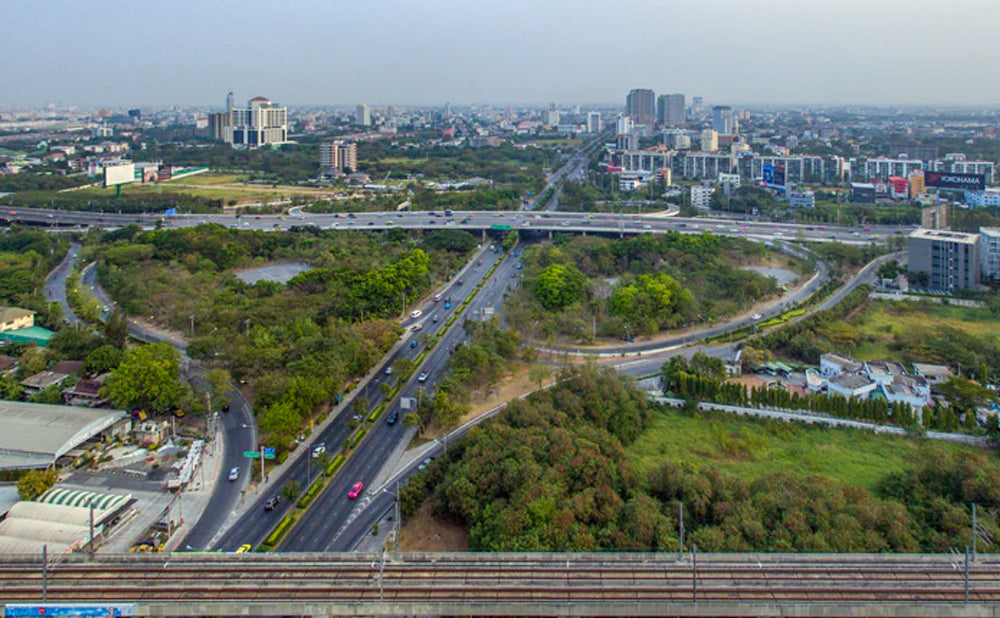How to drive in Thailand?

Basic rules of the roads and driving requirements.
GENERAL TIPS AND ROAD INFORMATION
Traffic drives on the left side of the road and overtakes on the right. Most Thai drivers are well mannered, and polite. You will hardly hear a cars honking and anger is rarely displayed. Road signs follow international convention and are in both Thai and English. Night driving is not recommended on the open road due to heavy truck traffic, whose drivers tend to have poor respect for cars. Motor bikes may be a hazardous, as they are often ridden into oncoming traffic. Driving on the more major routes outside Bangkok and around resort areas is both a safe and an enjoyable experience.
ROADS AND MOTORWAYS
Most of the roads and highways are in good condition, and have two or three lanes on each side. Some roads on Ko Samui and Ko Pha-Ngan are very dangerous, particularly the road from Thong Sala to Hat Rin on Ko Pha-Ngan. Accidents in this area are very common and are the number one cause of the death of foreigners in Thailand. This is not the road for a novice. While road engineering is acceptable, road maintenance is problematic. Roads are poorly marked, poorly maintained and narrow, causing drivers to maneuver dangerously to avoid road work and workers.
RIGHT OF WAY
Larger vehicle has right of way so give way quickly to a large truck behind you.

Parking
Parking in front of railings or at curbs painted red and white are prohibited.
Use handbrake only where the car won't roll as it is normal to double or triple park.
FINES
Police generally set up check points to enforce traffic regulations and seldom patrol or pursue violators. These check points focus on punitive measures for improper registration or insurance, lack of seat belts, or lack of motorcycle helmets.
If stopped by the police you will almost definitely be a fined around B400, B200, if you’re lucky. When you are stopped you have done something wrong, even if you are unaware. Pay the fine, never argue or lose your temper or it will cost more. Don’t expect a receipt for you will never know if it is a genuine fine a bribe. Laws against drunk driving apply.
FUEL
24 hour service stations are located on main routes and in major towns, but rural stations close in the evening. Prices are around 12 baht a liter and most gas stations require cash.

SPEED LIMITS
The maximum speed limit in cities and towns is 60km/h (35 mph) and varies between 90 and 120 km/h (52-60 mph) on expressways and country roads. Police regularly check speed.
TOLLS
Tolls apply only for expressways and motorways.
DRIVING REQUIREMENTS
The minimum age to drive in Thailand is 17.
DRIVER’S LICENSE
All drivers must hold a current, non-probationary license either from Thailand or their country. If it is not in Thai or English they must carry an English translation or an International Driver’s License (IDL) and a valid passport must be carried at all times.
You will need a Thai license once you have been in Thailand for more than 3 months.
INSURANCE
Third party policy insurance is mandatory and you must have valid health insurance if you ride a motorbike. Insurance is invalid if drivers exceed the legal alcohol limit.
In Thailand the car is insured not the driver, therefore insurance companies do not bother to rate the driver and have little interest in improving the skills and attitudes of drivers.
SEAT BELTS
Seat belts are compulsory.
MOTORCYCLES
Crash helmets are compulsory.
USEFUL TELEPHONE NUMBERS
Police 191
Fire 199
Medical Assistance 1669
Sources: Into Asia / Driving in Thailand / Budget Thailand / AmCham Thailand / WikiTravel
